Results 7,981 to 7,990 of 12096
Thread: Anandtech News
-
03-27-18, 05:46 PM #7981
Anandtech: Your New $2220 Smartphone: The Porsche Design Huawei Mate RS
In a world where we were only just starting to see the emergence of $999 flagship phones, Huawei and Porsche Design go and break the barrier by marketing their new device at €2095, which without tax and after conversion comes to the pricely sum of US$2220. At this price there has to be something more than just a simple P20 Pro under the hood, and it can’t all be brand name, right?
The first thing to notice is that unlike previous Porsche Design models of Huawei phones, this new ‘Mate RS’ edition seems to be built completely differently to the P20 Pro. The biggest giveaway is the camera placement – rather than being on the top left corner as in the P20 Pro, it is placed in the center at the back, which is much more akin to the Mate series of smartphones. However, this unit has Huawei’s new tri-camera implementation, featuring the 40MP RGB sensor, a 20MP monochrome sensor, and an 8MP telephoto lens. What the astute might recognize is that the Porsche Design Huawei Mate RS is basically an updated Mate-style designed device, but with the new P20 Pro internals, plus a bit more. This is why the PD device is called a Mate, rather than a P-series. The 'RS' bit is for Rally Sport, a common nomenclature on cars that are a bit sporty.
For the fistful of dolla-dolla bills, prospective owners are set to get the best that Huawei has to offer. The $2220 model comes equipped with 512 GB of storage, the most we have ever seen in a smartphone, while the $1800 model has 256 GB. Both storage variants are matched everywhere else in the design: a 6.0-inch FullView OLED display with a 2880x1440 resolution (538 ppi, 18:9), 6 GB of DRAM, a Kirin 970 processor with its NPU, the tri-camera setup with support for AIS, 5x Hybrid Zoom, and 960 FPS video recording, and Dual SIM capabilities with dual LTE and dual VoLTE. This model has the same battery size as the P20 Pro, coming in at 4000 mAh.
There’s also an ingress protection rating of IP67, and Huawei states that they are using their aerospace cooling technology with microcapsule phase change materials inside, similar to what was advertised with the Matebook X released in 2017. Also on the cards are dual fingerprint sensors – one on the back as standard, and one embedded into the display. This is a new in-screen fingerprint sensor from Goodix, rather than the Synaptics one seen earlier this year. The Mate RS will also support 10W wireless charging, making it the first Huawei high-end device to support wireless charging.Huawei P20 Pro and Porsche Design Huawei Mate RS P20 Pro PD Huawei
Mate RSSoC HiSilicon Kirin 970
4x Cortex A73
4x Cortex A53
Mali-G72MP12HiSilicon Kirin 9704x Cortex A734x Cortex A53Mali-G72MP12Display S 6.1-inch
OLED6.0-inch
OLEDR 2240x1080 2880x1440 Dim H 155.0 mm 152.9 mm W 73.9 mm 72.5 mm D 7.8 mm 8.5 mm RAM 6 GB 6 GB NAND 128 GB
+ microSD256 GB / 512 GB
+ microSDBattery 4000 mAh 4000 mAh
10W Qi Wireless ChargingIP Rating IP67 IP67 Front Camera 24MP f/2.0 24MP f/2.0 Rear
Camera #120 MP BW
f/1.620 MP BW
f/1.6Rear Camera #2 40 MP RGB
f/1.8
1 um
10 MP Mode
102400 ISO40MP
f/1.8
1 um
10 MP Mode
102400 ISORear Camera #3 8 MP f/2.4
Telephoto
5x Hybrid Zoom8 MP f/2.4
Telephoto
5x Hybrid ZoomModem Cat 18 / 13 LTE
5CA / 2CACat 18 / 13 LTE
5CA / 2CASIM Size Dual Nano SIM Dual Nano SIM Wireless 802.11ac 2x2 MIMO 802.11ac 2x2 MIMO Connectivity USB Type-C USB Type-C Features Fingerprint Sensor
AI Assisted Video Capture
Pixel Fusion
4D Predicative Focus
960 FPS video (720p)
Master AI
AI Image StabilizationP20 Pro +
Wireless Charging
In-screen Fingerprint
Aerospace Cooling
No NotchOS EMUI 8.1 EMUI 8.1 Price 128 GB: 899€ / $952 256 GB: 1649€ / $1800
512 GB: 2049€ / $2220
So this is a Mate 10 Pro with the P20 Pro internals, the P20 Pro cameras, a higher resolution display (up from FHD+), more storage, IP67, wireless charging, and an integrated fingerprint sensor. For those wondering, there is no notch.
Porsche Design calls this new smartphone ‘the 911 GT3 RS of smartphones’, and plan to offer a range of high-end accessories for the discerning buyer who wants them. The new devices will be available from April 12th, and will be available in red and black.
All being said, and price aside, that red version looked very nice up on stage, better than these pictures. Time to request a sample.
Related Reading- Huawei P20 and P20 Pro Hands-On: Embrace the Notch
- Huawei Mate 9 Porsche Design Unboxing and Hands On Benchmarks
- Huawei Mate 9 Porsche Design Launched: 1440p, Kirin 960, 6GB/256GB, $1300
- Hands-on With Huawei's Mate 10 and Mate 10 Pro
Gallery: Your New $2220 Smartphone: The Porsche Design Huawei Mate RS





More...
-
03-28-18, 08:17 AM #7982
Anandtech: Foxconn Acquires Belkin for $886m: Gets Belkin, Linksys, Wemo
Foxconn Interconnect Technology this week signed a definitive agreement to take over Belkin International, the company that controls such brands as Belkin, Linksys, Wemo, and Phyn. Foxconn will pay $866 million in cash for Belkin’s assets.
Under the terms of the agreement, Belkin will become a subsidiary of FIT, and all the brands will be preserved. Chet Pipkin, CEO and founder of Belkin, will remain at the head of the subsidiary. As part of the announcement, Foxconn promises that it will increase R&D spending of Belkin and grow the company’s portfolio of products.
Belkin and Linksys are primarily known for their PC/mobile accessories and network equipment, whereas the Wemo and Phyn brands are used to market smart home equipment. Foxconn believes that all of the product lineups are equally important and therefore the company will invest in all of them. As old contracts expire, Belkin’s outsourced products will be manufacturered by Foxconn instead.
“FIT is excited to acquire Belkin and its capabilities in the premium consumer products space,” said Sidney Lu, CEO of FIT. “Integrating Belkin’s best-in-class capabilities and solutions into FIT, we expect to enrich our portfolio of premium consumer products and accelerate our penetration into the smart home.”Hon Hai Precision Industry (which uses the Foxconn brand) is primarily known for its contract manufacturing of various electronics for different companies, including Apple, Sony, Microsoft, and dozens of others. The company earned $131.82 billion in revenue in 2016, but intense competition between Foxconn, Flextronics, Pegatron, Quanta, and other contract makers of devices have reduced profit margins in this business. To cut down their costs, the majority of contract producers have started to use robots in their factories in the recent years and further optimized their production flows. However, in a bid to increase profitability, they need other measures, such as making products they sell themselves.
Foxconn has been trying to diversify its business for well over a decade now. In the mid-2000s, the company entered channel markets of motherboards, graphics cards, PC chassis, and some other components. Admittedly, the company could barely compete against established brands like ASUS, so sometime during the financial turmoil of the late 2000s Foxconn pulled the plug on its own-brand PC products. Instead, the company decided to focus on consumer electronics. Foxconn bought Sharp’s television factories in Mexico, China and Malaysia in 2012, then acquired a 66% stake in the company in 2016, basically gaining control of the brand, its technologies, and patents.
In 2013, Foxconn established FIH Mobile, the company which acquired a former Nokia manufacturing facility in Hanoi from Microsoft, which began to wind down its handset business in 2016. In addition, FIH Mobile took over customer contracts, critical supply agreements, sales and distribution assets. At present, these assets are used to market Nokia-branded smartphones that are made by Foxconn (and probably co-designed by it). FIH Mobile does not have a Nokia brand license and has to share incomes (and losses) with HMD Global, but this partnership is probably more profitable than contract manufacturing of electronics
The acquisition of Belkin International further expands Foxconn’s business, technology, and brand portfolios. So far, Foxconn’s own brands complement each other and do not compete. Meanwhile, some of Foxconn’s customers may feel unhappy that their contract manufacturer competes against them with its own TVs, network equipment, or smart home products. On the other hand, Foxconn’s key customer Apple does not seem to be too worried about FIH Mobile’s affiliation with HMD and Nokia.
Buy Linksys WRT AC3200 Router on Amazon.com
Related Reading- Foxconn Takes Control of Sharp
- HMD Closes Nokia Brand and Patents Deal with Microsoft, Smartphones Due in 2017
- Linksys at CES 2018: Velop Updates, and a Gaming Router for the Xbox
- Belkin WeMo and Ubiquiti mFi Home Automation Platforms Review
More...
-
03-28-18, 08:17 AM #7983
Anandtech: Zotac ZBOX MAGNUS EK71080 Compact Gaming PC Review
Gaming systems and small form-factor (SFF) PCs have turned out to be growth segments in a desktop PC market that has been subject to severe challenges recently. Many vendors have tried to combine the two, but space constraints and power concerns have ended up as performance-limiting factors. Zotac, in particular, has been very active in this space with their ZBOX MAGNUS series. Starting with the EN980 (Intel Core i5-6400 / GTX 980), they have been on a regular release cadence - the EN1080 with an updated Pascal GPU came in mid-2016, while the CPU upgrade to Kaby Lake in the EN1080K came to the market in Q3 2017. All these systems carried a premium due to the integrated liquid cooling system. In order to hit a lower price point, Zotac has now started experimenting with fully air-cooled systems in the same form-factor. Today's review takes a look at the Zotac ZBOX MAGNUX EK71080 with a Core i7-7700HQ and a NVIDIA GTX 1080 GPU add-in card. Read on to find out how the unit performs in our rigorous benchmarking and evaluation process.
More...
-
03-28-18, 10:11 AM #7984
Anandtech: Glorious Glass: Lian Li Alpha Series Cases Now Available
Back in November 2017, Lian Li announced the new Alpha series of cases. The Alpha 330 and Alpha 550 cases were designed to bring users a steel internal frame as well as tempered glass surfaces for a better look at the inside. This was a departure from the usual Lian Li norm of aluminum everywhere, but now these cases are set to be available several months after the original announcement.
Both of the chassis are marketed towards gamers and enthusiasts and, a Lian Li first, RGB LEDs are included by way of the included fans. Lian Li says the chassis are “designed to blend the clean aesthetics of a tempered-glass chassis but have the familiarity and ease of a traditional PC chassis".
Both mid-tower cases offer flexible configurations for both air and water cooled systems and support a wide range of radiators: up to 420mm x 140mm on the front and an additional up to 360mm radiator on top. Both cases support up to ATX size motherboards and has seven expansion slots for PCIe cards. They will hold a total of 7 HDD/SSDs (2 x 3.5” + 5 2.5”) which should be plenty for most users. Support for VGA cards, CPU coolers, and PSUs are the same at 400mm, 170mm, and 250mm respectively.
Buy Lian Li Alpha 550 on Newegg
The Alpha 330 RGB utilizes three tempered glass panels, one on the front and the other two on the sides. The left side panel shows behind the motherboard tray and has two levels of transparency. The bottom portion is blacked out hiding the unsightly wires from the power supply while the remainder is there to show off the drives mounted on the back of the motherboard tray. The right panel where the motherboard and ‘business end’ is, has a small border to allow a good view of the internals. Behind the glass front panel on the 330 is s dust filter with a criss-cross pattern - fans are not included. The front panel IO consists of two USB 3.0 ports, an HD Audio plug, as well as a USB 3.1 Type-C port. It is good to see cases at this price point offer Type-C connectivity. The Alpha 330 chassis comes in black or white. Overall, it’s a very clean appearance with the tempered glass panels.
Buy Lian Li Alpha 330 White on Newegg
The Alpha 550 sports the higher price than the 330 and with that owners will get four tempered glass panels, as well as the BORA RGB LED fans. In addition to the sides, and front, the 550 includes the glass treatment on the top panel as well making for an even more premium look and feel. The BORA 120mm fans have 16 RGB LEDs integrated around the frame in what Lian Li calls a 'dispersion ring' to create its light effects. The BORA fans use an aluminum frame and dual ball bearing setup in the hub. The four-piece fan can also be disassembled for easy modification (Lian Li has four different colors) or cleaning. Adding to the RGB flare in the 550, an RGB strip is included and located below the front panel. This device and the fans are controlled by the remote.The 550's front panel IO is in a slightly different location, in that it sits facing and hidden behind a panel, whereas on the Alpha 330, it is on top without a panel covering it. The ports are the same.
The cases are available now with the Alpha 330 priced at $110 while the Alpha 550 is $180 from Newegg.
Related Reading:Lian-Li Alpha 330 and Alpha 550 Mid-Tower Chassis Model Alpha 330 Alpha 550 Case Type Mid Chasis Dimensions (W)230mm
(H)517mm
(D)540mm(W)230mm
(H)546mm
(D)450mmColor Black / White Front/Side Panel Tempered Glass Body Material SECC Net Weight 12.4kg 13.2kg External Drive Bays None HDD/SSD Bays 7 (2 x 3.5" + 5 x 2.5") Expansion Slots 7 Motherboard Type ATX System Fan Front: 3x 120mm*
Top: 3x 140/120mm*
Rear: 1x 120mm
*OptionalFront: 3x 120mm
(Digital LED fans with controller)
Top: 3x 140/120mm*
Rear: 1x 120mmI/O Ports 2x USB3.0
HD Audio
USB 3.1 (Type-C)VGA Card Support (L)400mm x (D)170mm CPU Cooling Support (H)170mm PSU Support ATX PSU,(L)250mm Radiator Support Top: 240mm x 120mm
Front: 360mm x 120mm- More Glass: New FSP CMT330 and CMT520 Gaming PC Cases
- Coolermaster Announces Availability of New HP500 Mesh White Mid-Tower Case
- iBuyPower at CES: Project Case Builder, for Better case Customization
- DeepCool Releases Quad Stellar Four-lobed Chassis: 'Smart' Case, Unique Shape
More...
-
03-28-18, 12:36 PM #7985
Anandtech: Intel’s Last Atom in Smartphones: A 2018 Benchmark
Intel's push into smartphones over the last 10 years has been well documented, as well as the subsequent downfall after its Broxton smartphone SoCs were cancelled in April 2016. This was not the ‘end’ for Atom in smartphones: an agreement between Intel and Spreadtrum, a low-end SoC vendor based in Asia, kept Intel SoCs going into smartphones for the low-cost market. These chips contained Intel Atom x86 cores, graphics, Spreadtrum modems, and were built in Intel’s fabs.
The two chips to come out of the agreement so far were the SC9861G-IA in 2017, followed by the SC9853i at the end of last year. These chips have most found themselves in Senwa phones, specifically the LS9718 and LS9918 that were launched at Mobile World Congress this year, and are in devices primarily marketed to Latin America and Africa.
The Spreadtrum SC9853i, the latest SoC to come out of the agreement, is actually the lower end unit. It uses eight Intel Airmont cores at 1.8 GHz, a dual core Arm Mali-T820 GPU (down from PowerVR), a 1080p video engine (down from 4K), and a maximum supported camera resolution of 16MP. The modem inside is suitable for up to 4G Cat 7 / 300 Mbps download.
We managed to get hold of the Senwa LS9718 at the show, at the Senwa booth which had a big Intel logo. The booth was fairly devoid of people, or at least, those that were there were not actively engaging with the devices. I only managed to start to have a look around before being pounced on by a Senwa representative from Latin America. He didn’t seem to understand much about what I was doing there as press, and I couldn’t get any more information beyond ‘these are Intel phones’ out of him, but he was happy to stand and watch (at a distance of 6 inches) while I ran a benchmark.
The Senwa LS9718 as a phone is a typical super-midrange phone, with a 5.7-inch HD+ IPS screen in an 18:9 format, with 3 GB DRAM and 32 GB storage, and a battery of 3000 mAh. It felt reasonable to hold, it had a dual camera (16MP + 8MP), a fingerprint sensor, and actually kind of felt like an old Huawei phone to be honest. According to Senwa’s press releases, there was also the LS9918 on the stand featuring the same SoC, but with a more premium 5.99-inch HD+ IPS screen.
The goal of looking at the device was to actually see what I could get out of the SoC underneath. Intel cores in smartphones are, at this point, a relative novelty. It still relies on Android to be compiled for x86 for example, as well as the intricacies of graphics interconnect and all the usual terminology with Arm based-devices but done in the context of Intel’s large x86 mantra.
So here is the one result I managed to get: A score of 22.65 in Jetstream, running on the native browser. The test took around 15-20 minutes to complete, so I was almost pushing my luck if I had asked to download PCMark or something, especially with the Senwa rep basically breathing down my neck. To put that into context with our benchmark data:
It is worth noting that the Senwa device was using its native browser, which will lead to some variation. During MWC we also played a bit with the ASUS Zenfone 5, with its Snapdragon 636, an octa-core Kryo 260. That unit scored 45.34 using Chrome in regular mode, and 54.13 in CPU boost mode. Even compared to the results in the graph above, the performance puts the device well below the LG G4, the Samsung Galaxy S5. The Moto Z Play Droid is a Snapdragon 625, an octa-core A53 configuration up to 2.0 GHz, showing that the Atom cores just cannot keep up.
Also worth mentioning is that the device started to get very warm to touch. Not uncomfortably so, but the combination of workload and heat soak was noticeable, especially over the 15 minutes it took for the test to run. For a javascript test like JetStream, I really would not expect a device to heat up as much as it did.
Funnily enough, in between MWC and today, Intel and Spreadtrum have agreed to extend their SoC alliance. The two companies are set to work together to develop SoCs integrating Intel’s 5G modems for deployment by the end of 2019. The difference here is that Spreadtrum plan to use Arm CPU cores, rather than Intel x86 cores. As a result, the SC9853i might be the last smartphone SoC with an Atom inside. So despite the new launches of devices from companies like Senwa, it is a rather meagre ending to a smartphone processor line that has been on life support for a while.
Sources: The Linley Group, PR Newswire
Related Reading- Intel's Changing Future: Smartphone SoCs Broxton & SoFIA Officially Cancelled
- Spreadtrum SC9861G-IA: An Intel Atom Octocore Smartphone SoC on 14nm with LTE
More...
-
03-28-18, 02:33 PM #7986
Anandtech: Goodix Ships Optical In-Display Fingerprint Sensor for Smartphones
Goodix this month introduced its first optical in-display fingerprint reader for smartphones featuring rigid or flexible AMOLED screens. The company claims that performance of the sensor is higher when compared to traditional capacitive fingerprint solutions. The reader is already used inside Vivo’s X21 and Huawei’s Porsche Design Huawei Mate RS smartphones.
Goodix calls its new product as “Optical In-Display Fingerprint Sensor”, which emphasizes that this is the company’s first product of this kind and it does not have any special brands or model numbers for it - it is just called the 'IN-DISPLAY FINGERPRINT SENSOR' in the materials (it is even trademarked as such).
The sensor sits up to 1.6 mm below the surface of the display and captures reflected fingerprints between and through the OLED pixels. Goodix does not disclose resolution of the reader, but claims that it has less than 0.002% false acceptance rate as well as less than 2% false rejection rate, which probably means that its resolution is high enough to enable comfortable operation. We have requested more information from Goodix, however repeated requests seem to get no new information.
The manufacturer says that its sensor is outfitted with an “optical stack design” and various software enhancements that ensure rapid capture of fingerprints under direct sunlight as well as take into account changes of minutiae when fingers get too dry or too cold. Goodix further says that its optical in-display fingerprint sensor works faster than conventional capacitive fingerprint readers and therefore usage of the OIDFS improves user experience of modern smartphones.
In addition, the company claims that its optical in-display fingerprint sensor can work with both rigid and flexible OLEDs and thus can take into account lamination techniques used to make flexible screens.
Modern smartphones with displays featuring a 18:9 or even 20:9 aspect ratio are now being fitted with fingerprint readers that sit below their AMOLED displays assembly. Late last year Synaptics introduced its in-display fingerprint sensor and commercialized it in early 2018. Being one of the largest suppliers of fingerprint readers, Goodix cannot ignore the new trend and is rolling out its in-display sensor this month. Keeping in mind that the company has hundreds of clients, it is logical to expect that many of them will adopt the in-screen fingerprint sensors as well as AMOLED screens for premium products going forward.
Related Reading- Synaptics Unveils Clear ID In-Display Fingerprint Sensor for 18:9, 20:9 Smartphones
- Synaptics at CES 2018: In-screen Fingerprint & OLED DDIC
- Synaptics Discusses Fingerprint Security and the Need For End-to-End Encryption
- Synaptics at CES 2017: Advanced Touch and DDIC
- Your New $2220 Smartphone: The Porsche Design Huawei Mate RS
Gallery: Goodix Ships Optical In-Display Fingerprint Sensor for Smartphones

More...
-
03-29-18, 07:39 AM #7987
Anandtech: NVIDIA Pauses Self-Driving Vehicle Testing; Confirms DRIVE Wasn’t In Last
While not announced as part of this week’s GTC keynote, during the keynote itself word got out via Reuters that the company had suspended their active testing of their DRIVE autonomous vehicle driving system. Later confirmed and expounded upon by NVIDIA, the company was pausing public road testing of self-driving vehicles in light of last week’s fatal self-driivng Uber collision in Arizona. Noting that they wanted to be able to learn from the incident, they opted to stop and see what the investigation turned up.
And while the pause makes sense for both political and practical reasons, since then there’s bit a bit of confusion over just what NVIDIA’s involvement was with the Uber vehicle in last week’s incident and the timeline of their response. So as part of a GTC press Q&A session yesterday afternoon, NVIDIA CEO Jen-Hsun Huang clarified a few details about the incident – at least to as much as NVIDIA is able and willing to do.
On the hardware side of matters, NVIDIA is confirming that the Uber vehicle was using NVIDIA GPUs, but that it wasn’t using the company’s DRIVE platform. This matches earlier reports that NVIDIA hardware was in the vehicle. Uber for its part has been using NVIDIA GPUs in this fashion since 2016 – including in Arizona – well before the announcement of the closer partnership with NVIDIA back at CES 2018.
As a result the vehicles in Uber’s existing fleet are using NVIDIA’s GPUs in a commercial off-the-shelf capacity paired with other processors, all running Uber’s own software stack. This is as opposed to NVIDIA’s DRIVE platform, which utilizes NVIDIA processors throughout (SoCs and GPUs), with NVIDIA’s DRIVE software package running on top of that.
As one of the early leaders in the field, it’s of course in NVIDIA’s best interests to make sure that they avoid negative controversy, especially in the case of collisions. So the distinction between GPUs and DRIVE is for them quite significant; the accident doesn’t reflect any of their technology on sensor fusion, hardware fault tolerance, or the all-important neural networking-based software stack that actually acts on all of this data. Consequently however, it also means they’re largely out of the loop of the investigation; since it wasn’t NVIDIA’s platform, the investigation is being undertaken by Uber itself, which is part of the reason why NVIDIA’s comments have been so reserved.
Meanwhile as for the testing pause itself, Huang mentioned that the halt actually happened a couple of days earlier than Reuters first reported, with NVIDIA stopping “a day or two later” after the initial news came out. In the meantime NVIDIA is continuing to manually drive their test vehicles on public roads in order to continue collecting data and training its neural networks.
The event, while clearly not fortuitous for anyone, does none the less come at an interesting time for NVIDIA. The company has previously been developing their simulator systems for training neural networks – including self-driving cars – which they are now moving forward on as a commercial product with the DRIVE Sim and Constellation systems, which are set to launch later this year. It’s not clear if NVIDIA is already able to use the prototypes for practical training internally – and regardless real-world testing will resume sooner than later – but the Uber incident means that simulated training just became a much more valuable field, much to NVIDIA’s benefit.
More...
-
03-29-18, 09:21 AM #7988
Anandtech: Xiaomi Announces 15.6-inch Mi Gaming Laptop: Mid-Specs with Aggressive Pri
Chinese brand Xiaomi this week announced its new Mi Gaming Laptop, its first endeavor into the gaming side of laptops. The 15.6-inch Full-HD 1080p gaming laptop will offer up to a GTX 1060 6GB graphics card, 16GB of DDR4 memory, and a Kaby Lake i7 Kaby Lake processor. Starting under $1000 for the i5-7300HQ plus 1050 Ti variant, the Mi Gaming Laptop is searching for the user looking for a decent gaming experience without breaking the bank.
The outside of the black aluminum chassis has a brushed aluminum finish and goes without a logo on the lid giving it a pretty unassuming, almost business-like appearance. The laptop measures in with a 15.6-inch 1920x1080 screen and weighs in around 2.7 kg. In order to add a bit of flare to the gaming oriented device, Xiaomi includes and four-zone RGB backlit keyboard as well as RGB illumination located on the bottom of the chassis. Outside of the lights, the only other things we see are I/O ports as well as four exhaust ports for cooling located on the side and back of the chassis.
Internally, The Mi Gaming Laptop’s base configuration starts off with a 7th generation Intel Core i5-7300HQ, a quad-core with a base frequency of 2.5 GHz and a maximum turbo frequency of 3.5 GHz. The base video card is an NVIDIA GTX 1050 Ti 4 GB GDDR5 which should offer adequate gaming performance. The Mi’s 15.6-inch FHD panel has 72% NTSC color gamut with 300 nits brightness and the only panel choice. The device starts off with 8 GB of DDR4-2400 memory which is upgradeable to 16 GB.
The high-end configuration steps up to an Intel Core i7-7700HQ, a quad core with hyperthreading and base speeds of 2.8 GHz, pushing a maximum turbo of 3.8 GHz. The GPU moves up to the faster GTX 1060 with 6 GB GDDR5. Memory capacity also doubles to 16GB DDR4-2400 as standard. Cooling any configuration is Xiaomi’s own 3+2 ‘large diameter’ heat pipe design and two fans which intake air from the bottom and exhaust out of the side vents.
For storage purposes, the Mi Gaming Laptop is able to house two M.2 PCIe drives and a single 2.5-inch drive. These can be filled with any combination of 128 GB or 256 GB SSD as well as a 1TB HDD option, although Xiaomi does not state if these M.2 ports are SATA or PCIe. I/O connectivity includes four USB 3.0 ports, a USB 3.0 Type-C port, microphone and headphone jacks, an HDMI port, and a Gigabit Ethernet port. The Mi also includes 802.11ac Dual-band Wi-Fi with speeds up to 867 Mbps as well as Bluetooth 4.1.
The base model with the i5, 8GB DDR4, and 1050 Ti graphics will cost 5999 CNY while the top end i7, 16GB DDR4, and GTX 1060 combo will run at 8999 CNY. After taking out China's tax rate, this comes to a range of $815 to $1223. These are not available now, but will only be released in China with a Chinese version of Windows on April 13th.Mi Gaming Laptop Core i5 Model Core i7 Model GTX 1050 Ti GTX 1060 128 GB 256 GB Warranty Period 1 Year Warranty Product Page LINK Processors Intel Core i5-7300HQ
4C / 4T
2.5 GHz Base
3.5 GHz TurboIntel Core i7-7700HQ
4C / 8T
2.5 GHz Base
3.8 GHz TurboMemory 8 GB
DDR4-24008 GB
DDR4-24008 GB
DDR4-240016 GB
DDR4-2400Network Connectivity Gigabit Ethernet
802.11ac Dual Band (2Tx2R) Wi-FiStorage SSD 128GB 128 GB 128 GB 256 GB HDD 1 TB 1 TB 1 TB 1 TB Graphics GTX 1050 TI
4 GB GDDR5
768 CUDAGTX 10606 GB GDDR51280 CUDAGTX 1060
6 GB GDDR5
1280 CUDAGTX 1060
6 GB GDDR5
1280 CUDAExpansion Slots 1 x SD card reader Display 15.6+ FHD 72% NTSC color gamut Ports and Connectors 1 x USB Type-C
4 x USB 3.0 Type-A
1 x HDMI (v2.0)
1 x 3.5mm Headphone
1 x 3.5mm Mic-In
1 x SD Card Reader (SD/SDHC/SDXC)Input Device RGB Membrane Keyboard Camera HD Camera Power 330W External AC Power adapter,
94.24Wh Battery, Li-PoAudio 3W x 2 Dolby Panorama Sound Dimensions 14.3" x 10.4" x 0.82" Weight 5.95 lbs+ Price ($US) 5999 CNY
~$8156999 CNY
~$9527999 CNY
~$10878999 CNY
~$1223
Xiaomi's previous foray into laptops include a Mi Notebook Pro with a Core i7-8250U and MX150, and a Mi Notebook Air, each with similarly aggressive pricing.
Buy Xiaomi Notebook Air on Amazon.com
Buy Xiaomi Mi Notebook Pro on Amazon.com
Related Reading:- Best Laptops Q1 2018
- Matebook X Pro (2018): Huawei's Flagship Laptop Upgrade
- VAIO S Laptops Updated With 8th Gen Core CPUs & TruePerformance to Prolong Turbo Time
- HP Announces Updated Elitebook 800 G5 series and ZBook 14U/15U Laptops
More...
-
03-29-18, 09:21 AM #7989
Anandtech: Phantom Gaming: ASRock Unveils as an AMD GPU Partner
ASRock has officially introduced its first graphics cards. The Phantom Gaming family will initially include four GPU models based on the Radeon RX 500-series GPUs and are aimed at the mainstream market segment. The lineup of four boards will allow ASRock to understand its potential on the market, but will hardly pose a strong competition to other players.
ASRock’s Phantom Gaming family consists of four graphics cards running AMD’s Polaris 10 and Polaris 11 GPUs: the Phantom Gaming Radeon RX550 2G, the Phantom Gaming Radeon RX560 2G, the Phantom Gaming X Radeon RX570 8G OC, and the Phantom Gaming X Radeon RX580 8G OC. The cards will ship with default frequencies comparable to those recommended by AMD, but all of them support OC mode that can be activated using ASRock’s proprietary overclocking utility.
All of the Phantom Gaming graphics cards rely on PCBs and cooling systems developed by ASRock. The higher end Radeon RX 570/580 boards use large coolers featuring two fans as well as an aluminum radiator with a copper base and three heat pipes. The entry-level Radeon RX 550/560 adapters are compatible with Mini-ITX systems and feature basic aluminum radiators with one fan. The manufacturer says that it uses premium thermal grease as well as double ball bearing fans to maximize lifespan and efficiency of its cooling systems. To maximize compatibility, all the cards carry DVI-D, DisplayPort and HDMI outputs in order to connect to all kinds of displays.
So far ASRock has not disclosed any plans to use AMD’s flagship Vega graphics processors, but since it is only entering the market of video cards for the first time, the company is clearly a bit cautious.Brief Specifications of ASRock's Phantom Gaming Graphics Cards Phantom Gaming Radeon RX550 2G Phantom Gaming Radeon RX 560 2G Phantom Gaming X Radeon RX570 8G OC Phantom Gaming X Radeon RX580 8G OC Stream Processors 512 896 2048 2304 Texture Units 32 56 128 144 ROPs 16 16 32 32 GPU Clock Silent 1056 MHz 1103 MHz 1228 MHz 1324 MHz Base 1100 MHz 1149 MHz 1280 MHz 1380 MHz OC 1144 MHz 1194 MHz 1331 MHz 1435 MHz Memory Capacity 2 GB 8 GB Type GDDR5 Bus 128-bit 256-bit Clock Silent 5760 MT/s 6720 MT/s 7680 MT/s Base 6000 MT/s 7000 MT/s 8000 MT/s OC 6240 MT/s 7280 MT/s 8320 MT/s Outputs DVI-D DL
DisplayPort 1.4
HDMI 2.0DVI-D DL
3 × DisplayPort 1.4
HDMI 2.0Launch Date Q2 2018 Launch Price ? ? ? ?
ASRock has not announced MSRPs for its Phantom Gaming video cards, but considering the fact that street prices of GPUs are high these days, it is hardly something surprising. Expect the newcomer to sell its products at prices that are competitive against established players.
Buy ASUS Radeon RX 580 8GB Dual-fan OC Edition on Amazon.com
Related Reading- ASRock Teases ‘Phantom Gaming’ Graphics Cards
- ASRock at CES 2018: Micro-STX DeskMini GTX PC Gets Coffee Lake
- ASRock at CES 2018: Ultra Quad M.2 PCIe Card
- ASRock Unveil Their New microATX Threadripper Motherboard, The X399M Taichi
- The ASRock X299 Taichi Motherboard Review
More...
-
03-29-18, 10:39 AM #7990
Anandtech: NVIDIA ARM SoC Roadmap Updated: After Xaiver Comes Orin
As part of this week’s GTC 2018 keynote address, NVIDIA CEO Jen-Hsun Huang quickly touched upon the future of NVIDIA’s ARM SoC lineup. While the company no longer publicly advertises or sells ARM-based SoCs – the last SoC branded Tegra was the Tegra X1 – they have continued development for private uses. Chief among these of course being their DRIVE systems, where the Xavier SoC is at the heart of both the single-SoC Xavier module, as well as the larger and more powerful muti-processor Pegasus module for level 5 vehicles.
While Xavier itself is just now sampling to partners, NVIDIA already has their eye on what’s next. And that is Orin.
Unlike even the Xavier tease in 2016, NVIDIA is saying very little about Orin other than the fact that it’s the next generation of NVIDIA SoCs. Like Xavier, it’s a single-chip solution. But otherwise we don’t know anything about the planned architecture or features.
With respect to performance, NVIDIA isn’t giving hard figures there either, but they are saying that they want to replace a Pegasus module with a couple of Orins. Pegasus, as a reminder, is a pair of Xaviers each with an unnamed, post-Volta discrete GPU attached, with a total power consumption of 500W. So to replace that with a couple of single-chip SoCs would be a significant accomplishment – and presumably a massive bump in energy efficiency.NVIDIA ARM SoC Specification Comparison Orin Xavier Parker CPU Cores ? 8x NVIDIA Custom ARM "Carmel" 2x NVIDIA Denver +
4x ARM Cortex-A57GPU Cores ? Xavier Volta iGPU
(512 CUDA Cores)Parker Pascal iGPU
(256 CUDA Cores)DL TOPS [A Ton] 30 TOPS N/A FP32 TFLOPS ? 1.3 TFLOPs 0.7 TFLOPs Manufacturing Process 7nm? TSMC 12nm FFN TSMC 16nm FinFET TDP ? 30W 15W
But finally, let’s talk about the real question on everyone’s mind: which superhero is this new SoC named after? After a run in the Marvel universe, it looks like NVIDIA is back to favoring DC. A brief search shows that Orin is another name for Aquaman. Which certainly isn’t as high-profile as the likes of Kal-El, Wayne, or Xavier, but perhaps Jen-Hsun Huang is a big fan of Jason Momoa? (ed: and indeed, who doesn’t find Aquaman outrageous?)
More...
Thread Information
Users Browsing this Thread
There are currently 44 users browsing this thread. (0 members and 44 guests)




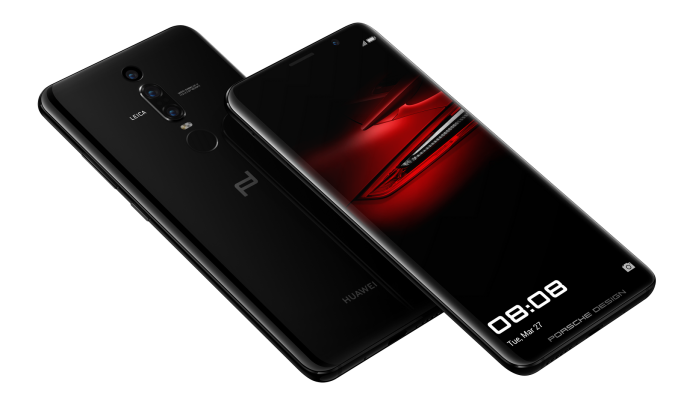


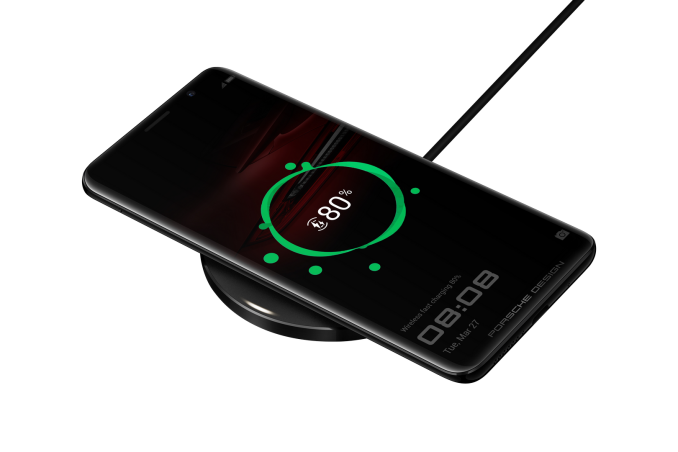


 Quote
Quote


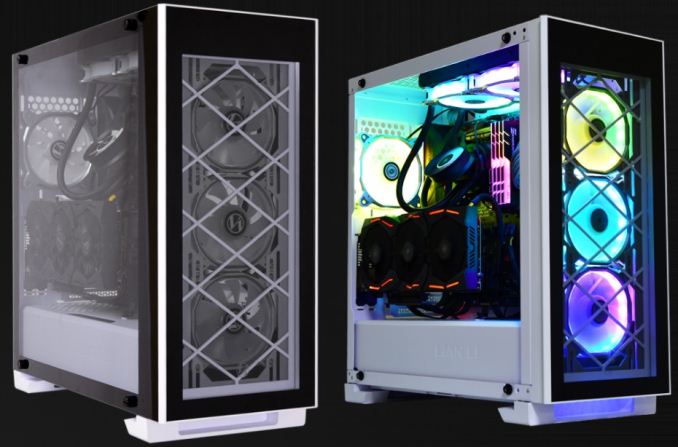
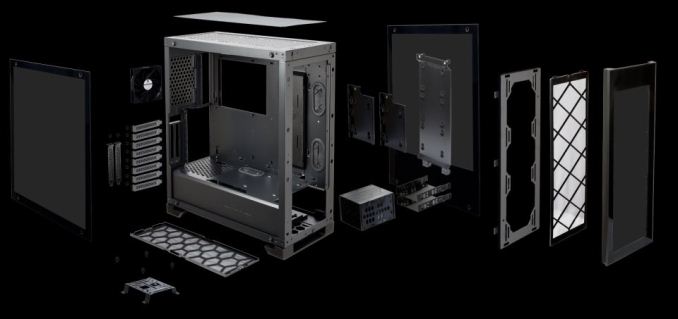
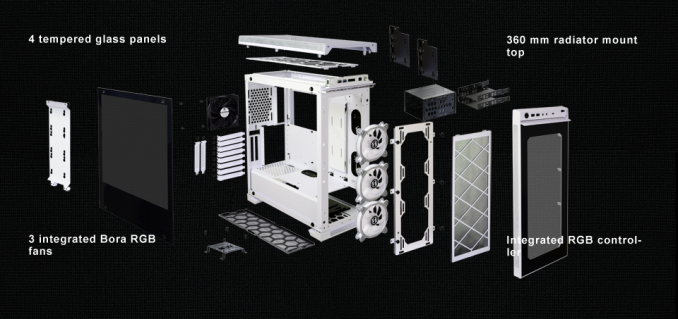
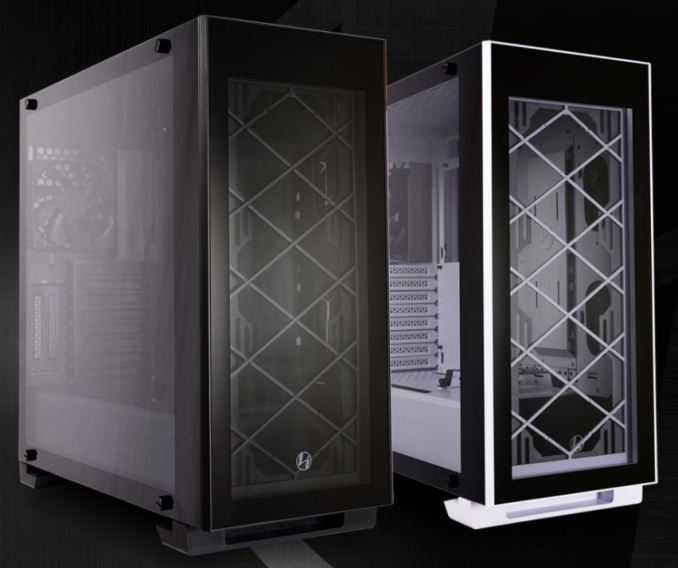
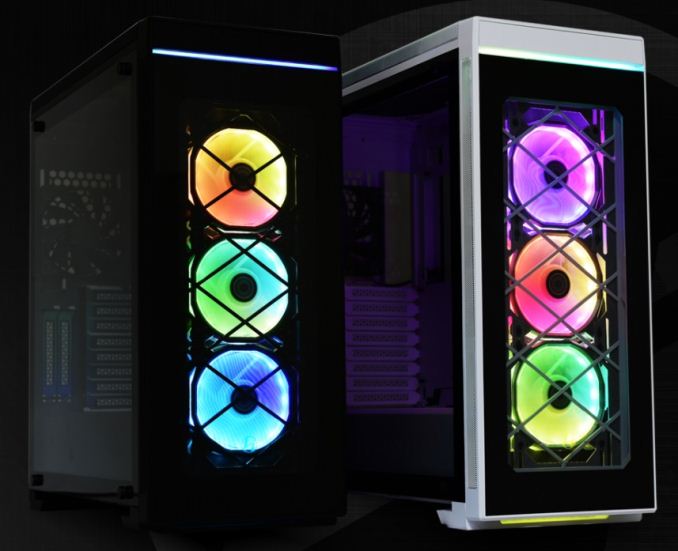
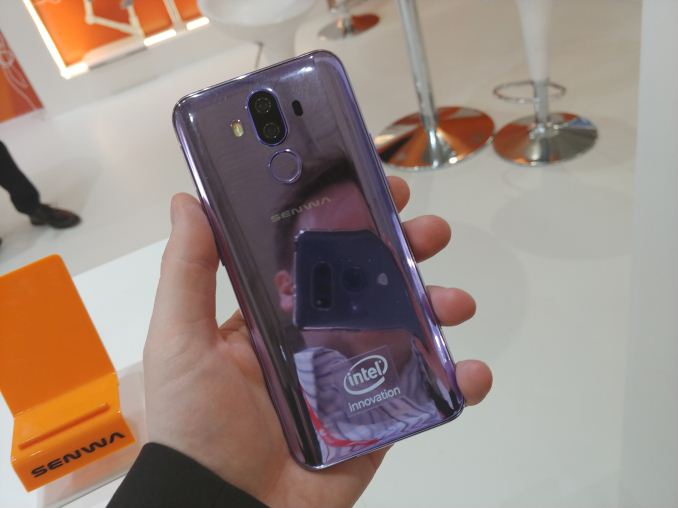
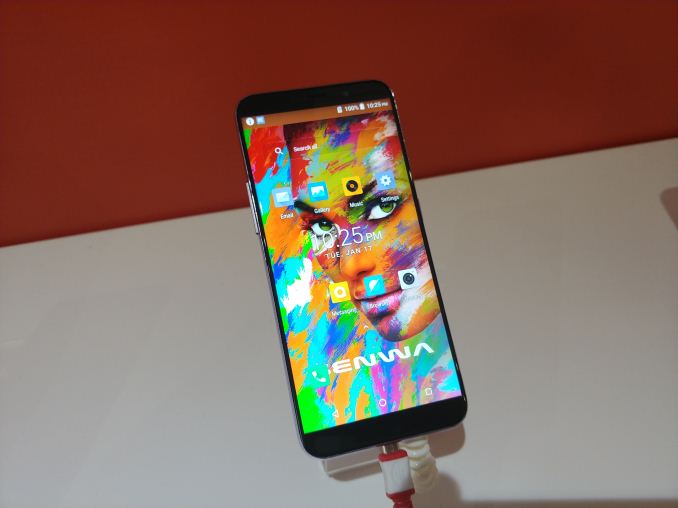
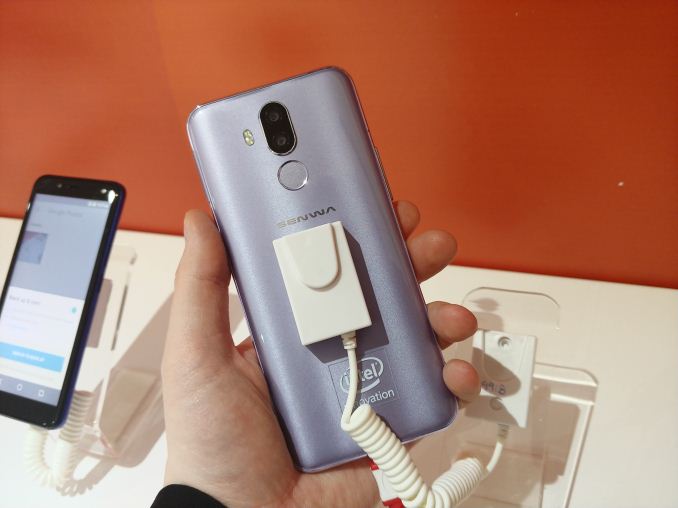
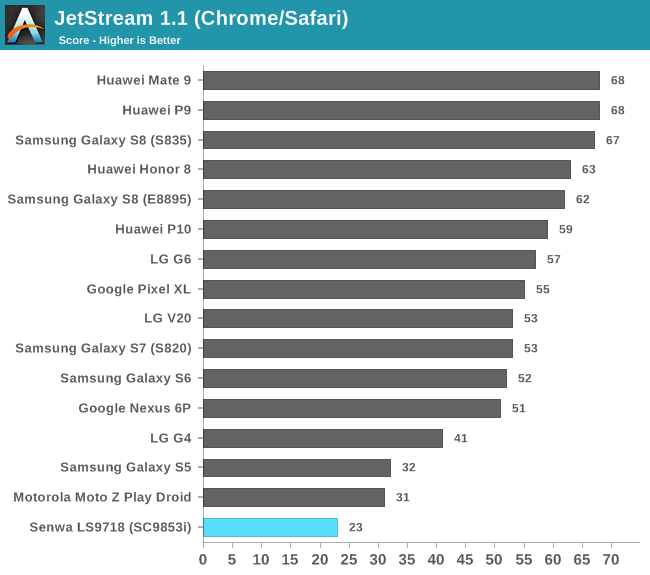
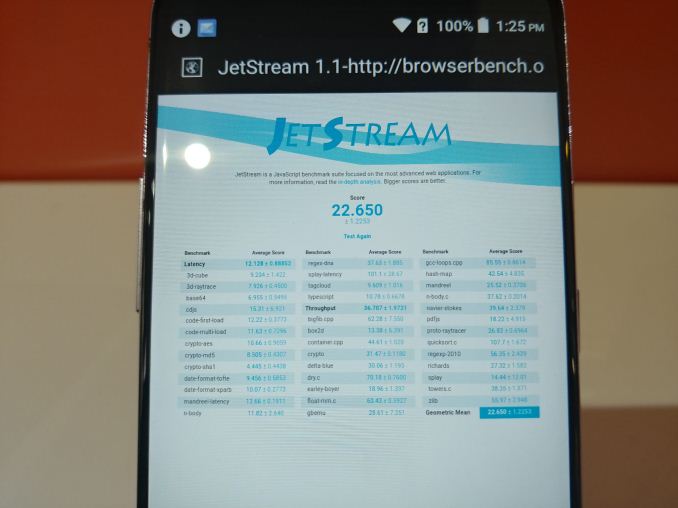
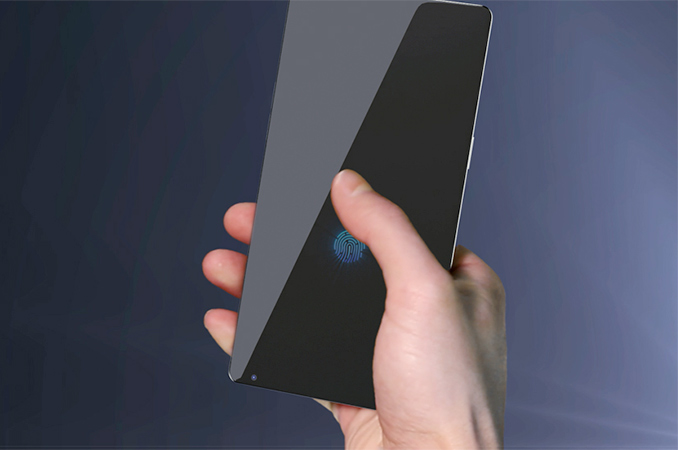



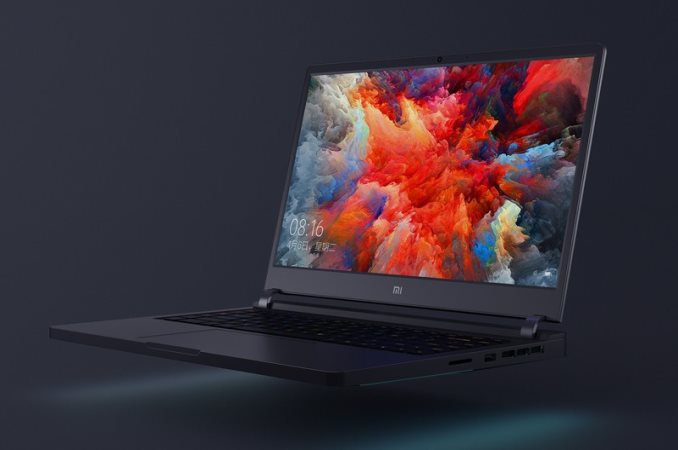
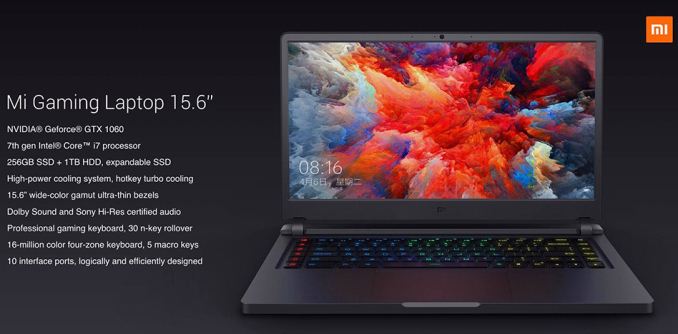
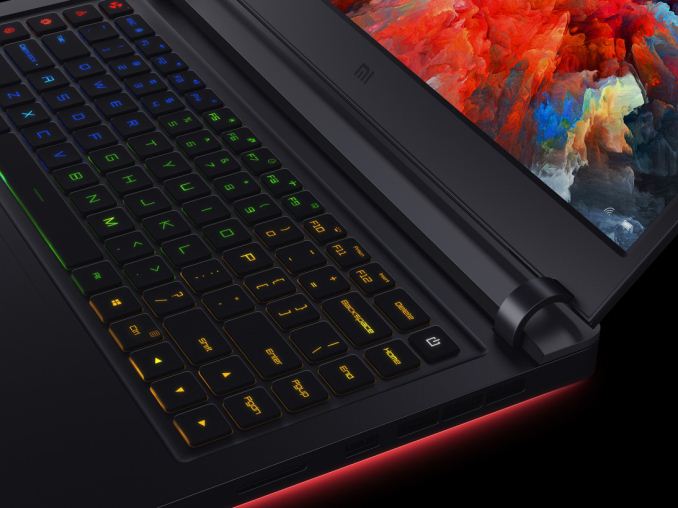
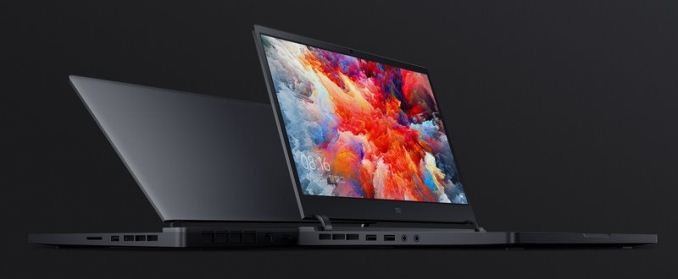
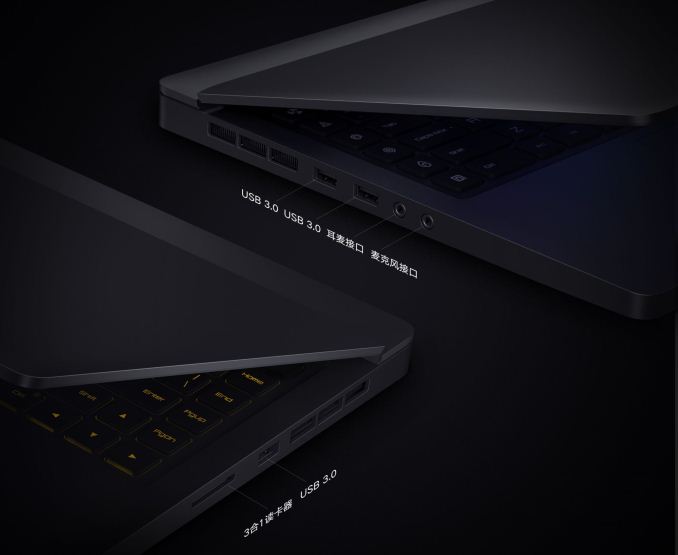
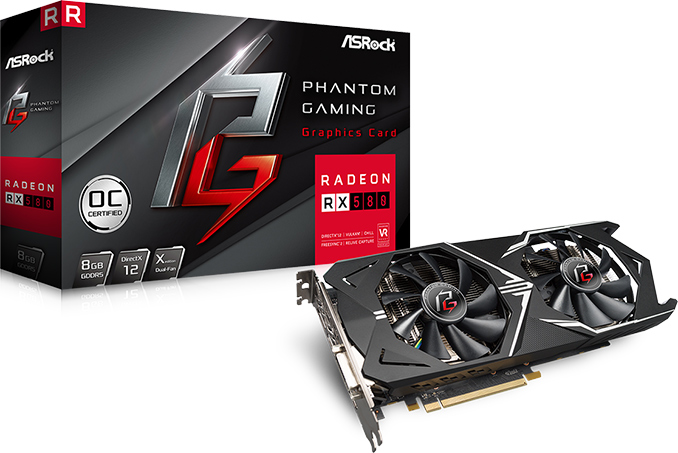
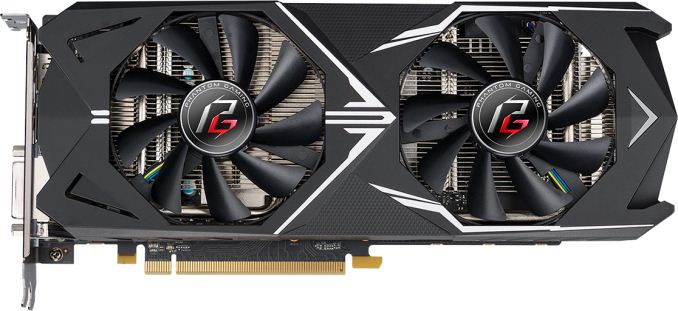
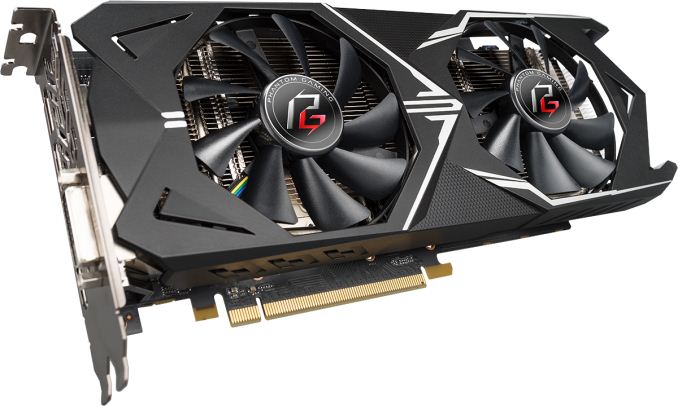
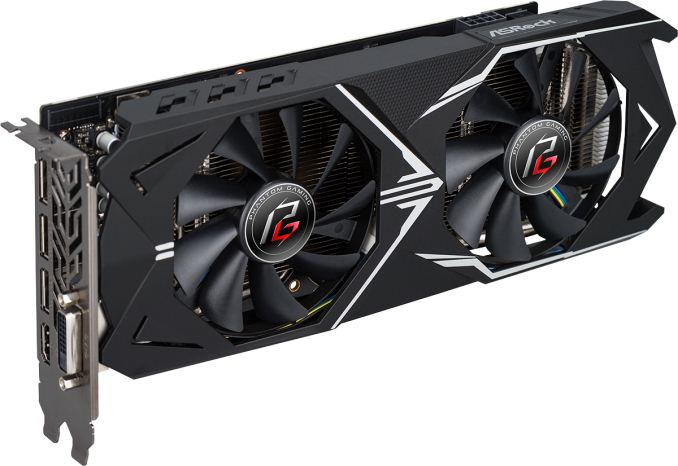
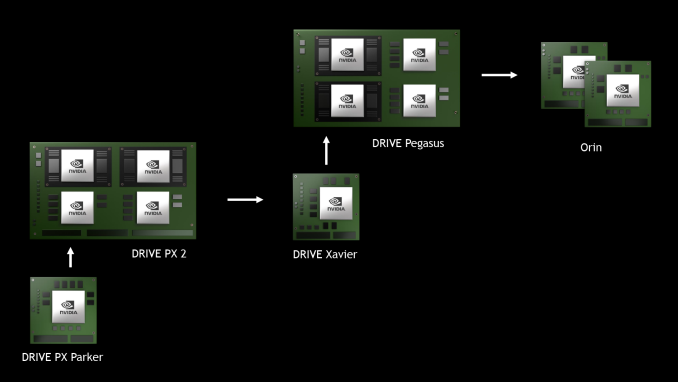
















Bookmarks